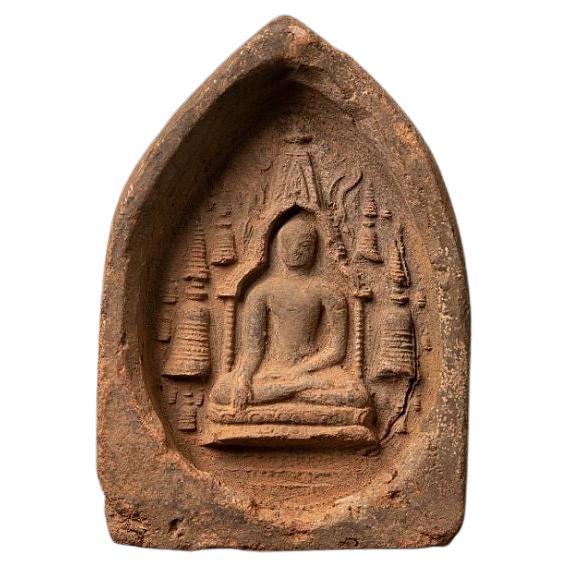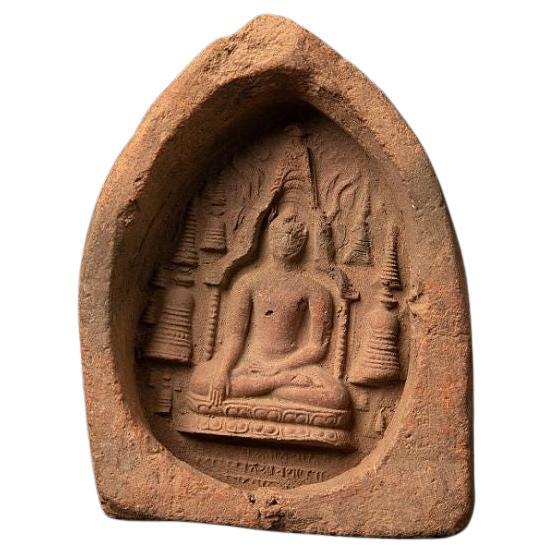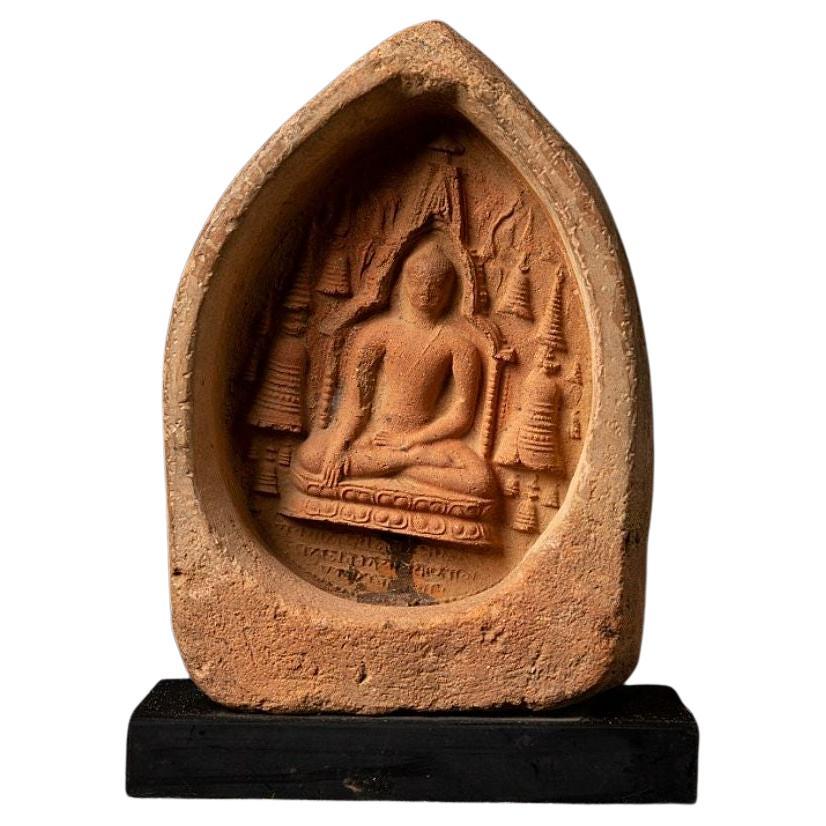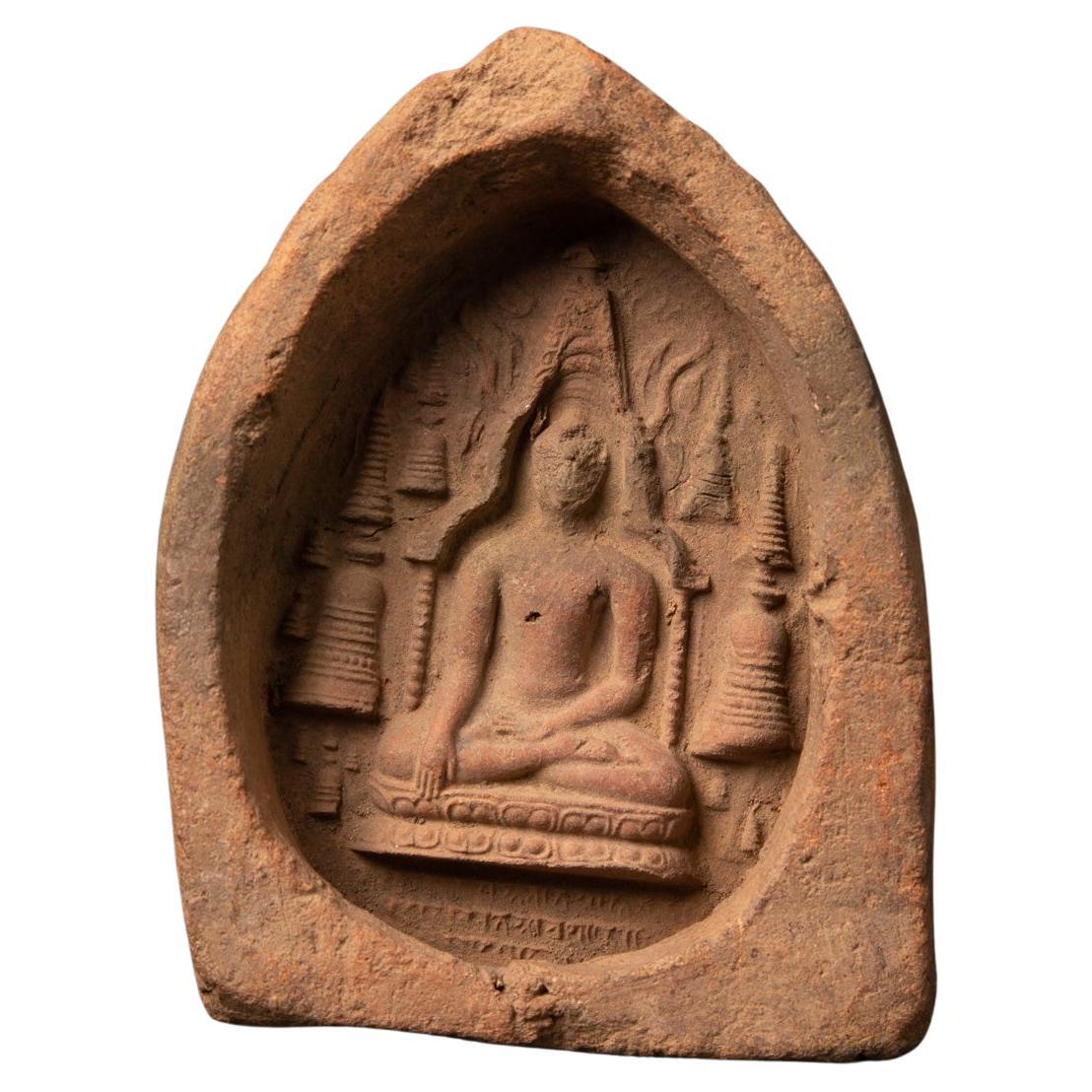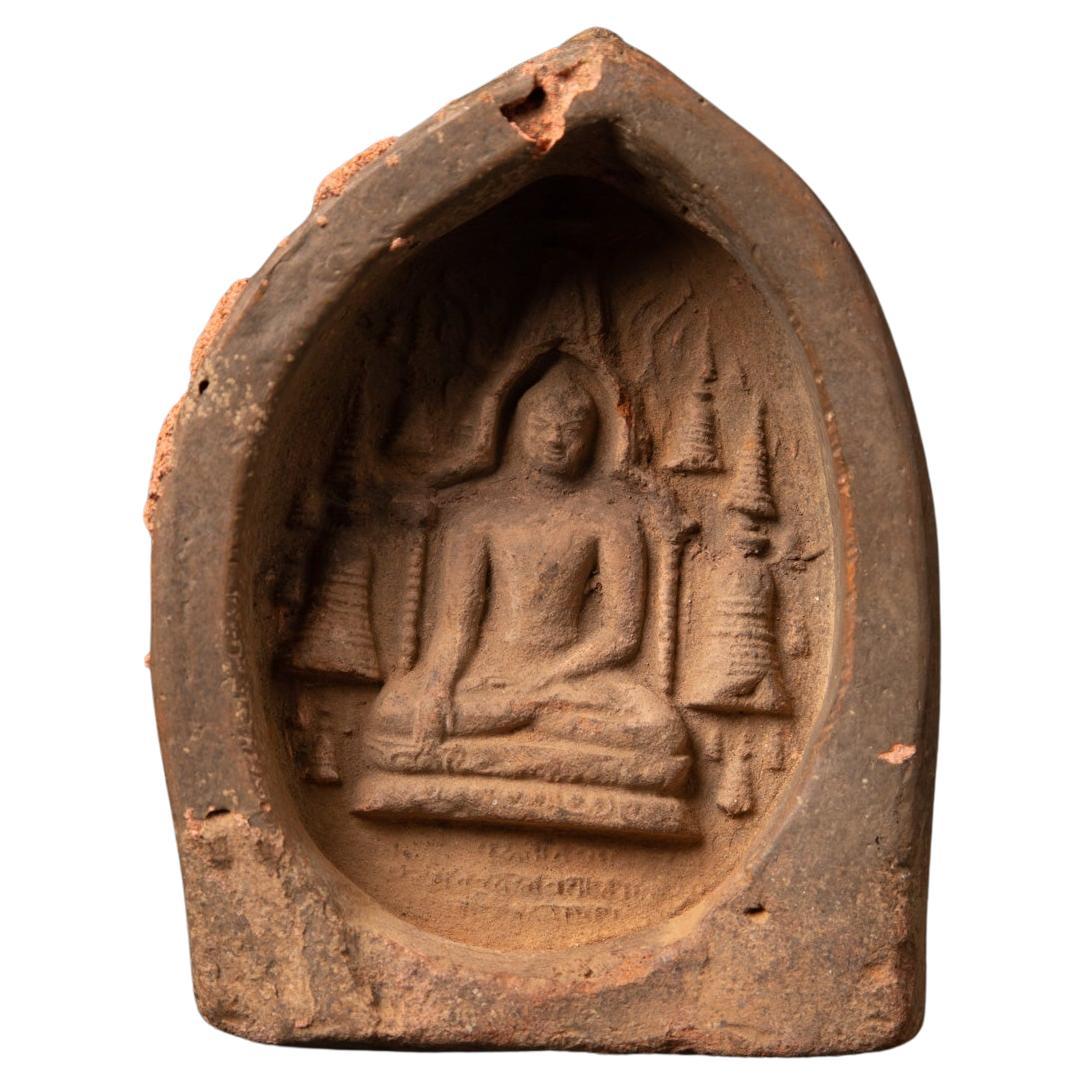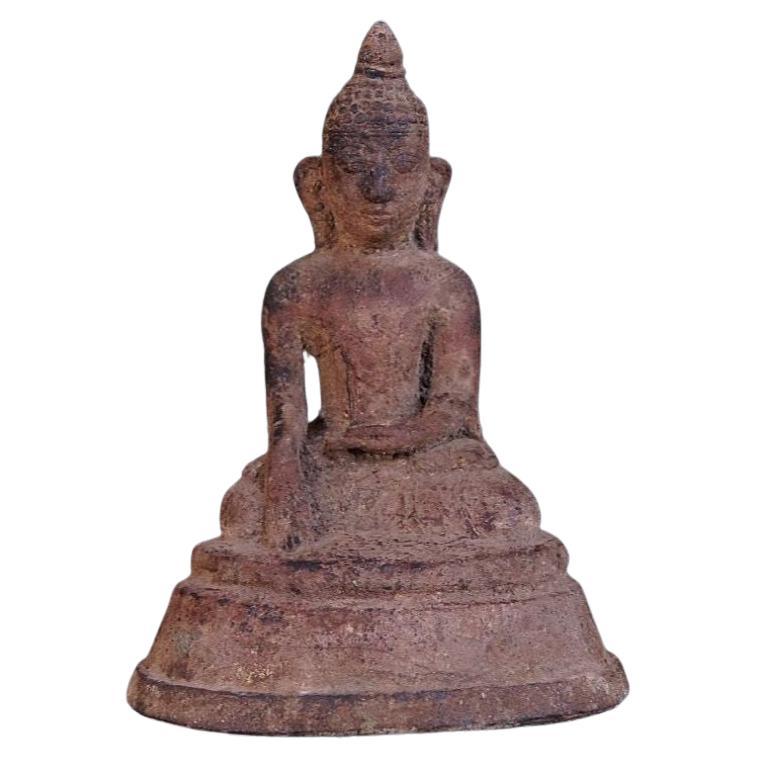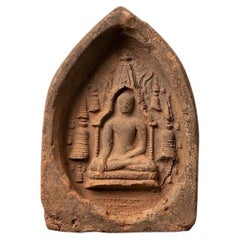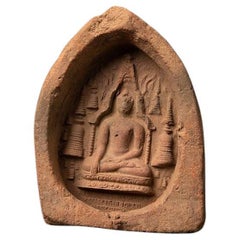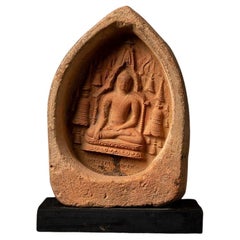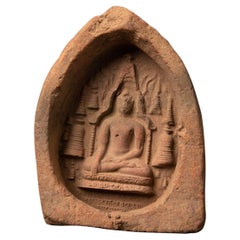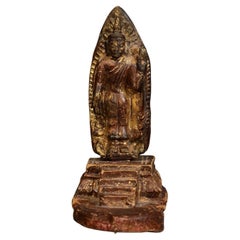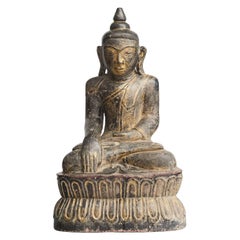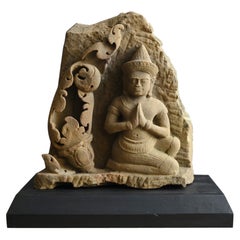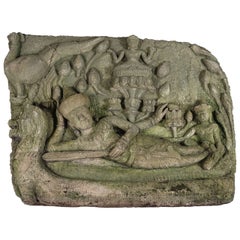Items Similar to 12th Century Pagan Votive Tablet from Burma
Want more images or videos?
Request additional images or videos from the seller
1 of 21
12th Century Pagan Votive Tablet from Burma
$1,254.46
£933.86
€1,047
CA$1,718.29
A$1,911.12
CHF 997.93
MX$23,256.24
NOK 12,745.03
SEK 11,952.59
DKK 7,970.45
Shipping
Retrieving quote...The 1stDibs Promise:
Authenticity Guarantee,
Money-Back Guarantee,
24-Hour Cancellation
About the Item
Material: Terracotta
Material: wood
20,8 cm high
15 cm wide and 9 cm deep
Weight: 1.403 kgs
Bagan style
Originating from Burma
12th century - original from the Pagan period
Still in very good condition !
Very special !.
- Dimensions:Height: 8.19 in (20.8 cm)Width: 5.91 in (15 cm)Depth: 3.55 in (9 cm)
- Materials and Techniques:
- Place of Origin:
- Period:
- Date of Manufacture:12th Century
- Condition:Wear consistent with age and use.
- Seller Location:DEVENTER, NL
- Reference Number:Seller: 3673-41stDibs: LU7845232079152
About the Seller
5.0
Vetted Professional Seller
Every seller passes strict standards for authenticity and reliability
Established in 1997
1stDibs seller since 2022
56 sales on 1stDibs
Typical response time: 6 hours
- ShippingRetrieving quote...Shipping from: DEVENTER, Netherlands
- Return Policy
Authenticity Guarantee
In the unlikely event there’s an issue with an item’s authenticity, contact us within 1 year for a full refund. DetailsMoney-Back Guarantee
If your item is not as described, is damaged in transit, or does not arrive, contact us within 7 days for a full refund. Details24-Hour Cancellation
You have a 24-hour grace period in which to reconsider your purchase, with no questions asked.Vetted Professional Sellers
Our world-class sellers must adhere to strict standards for service and quality, maintaining the integrity of our listings.Price-Match Guarantee
If you find that a seller listed the same item for a lower price elsewhere, we’ll match it.Trusted Global Delivery
Our best-in-class carrier network provides specialized shipping options worldwide, including custom delivery.More From This Seller
View All12th Century Pagan Votive Tablet from Burma
Located in DEVENTER, NL
Material: Terracotta
Material: wood
20,5 cm high
15 cm wide and 9 cm deep
Weight: 1.318 kgs
Bagan style
Originating from Burma
12th century - original from the Pagan period
...
Category
Antique 15th Century and Earlier Burmese Sculptures and Carvings
Materials
Wood
12th Century, Pagan Votive Tablet from Burma
Located in DEVENTER, NL
Material: Terracotta
Material: wood
19,9 cm high
15 cm wide and 9 cm deep
Weight: 1.305 kgs
Bagan style
Originating from Burma
12th century - original from the Pagan period
...
Category
Antique 15th Century and Earlier Burmese Sculptures and Carvings
Materials
Wood
12th Century Pagan Votive Tablet from Burma
Located in DEVENTER, NL
Material: Terracotta
Material: wood
Measures: 19,5 cm high
14,2 cm wide and 6,6 cm deep
Weight: 1.248 kgs
Bagan style
Originating from Burma
12th century - original from the ...
Category
Antique 15th Century and Earlier Burmese Sculptures and Carvings
Materials
Wood
12th century Pagan Votive Tablet from Burma - OriginalBuddhas
Located in DEVENTER, NL
Presenting this 12th-century Pagan votive tablet, an authentic and very special artifact from Burma’s historic Pagan period. Crafted from terracotta in classic Bagan style, it dates ...
Category
Antique 15th Century and Earlier Burmese Sculptures and Carvings
Materials
Terracotta
12th century Pagan Votive Tablet from Burma - OriginalBuddhas
Located in DEVENTER, NL
This 12th century Pagan Votive Tablet
Material: Terracotta
20,8 cm high
15 cm wide and 9 cm deep
Bagan style
12th century - original from the Pagan peri...
Category
Antique 15th Century and Earlier Burmese Sculptures and Carvings
Materials
Terracotta
Antique Nyaung-Yan Buddha from Burma
Located in DEVENTER, NL
Material: bronze
19 cm high
13 cm wide
Weight: 1.6 kgs
Ava style
Bhumisparsha mudra
Originating from Burma
16/17th century - Nyaung-Yan (Ava) period
Traces of 24 krt. gold c...
Category
Antique Early 17th Century Burmese Sculptures and Carvings
Materials
Bronze
You May Also Like
15th Century, Ava, Antique Burmese Pottery Standing Buddha
Located in Sampantawong, TH
Burmese pottery standing Buddha.
Age: Burma, Ava Period, 15th Century
Size: Height 13.4 C.M. / Width 6.2 C.M. / Length 10.7 C.M.
Condition: Nice c...
Category
Antique 15th Century and Earlier Burmese Antiquities
Materials
Pottery
$480 Sale Price
20% Off
Mid-18th Century Burmese Stone Buddha
Located in Kastrup, DK
A mid 18th century Burmese stone Buddha seated in Bhumisparsha mudra position* (“calling the earth to witness”).
Black-red lacquer with remnants of gild...
Category
Antique 18th Century Burmese Other Religious Items
Materials
Stone
Cambodian antique stone Buddha figurine/Angkor period/Khmer art
Located in Sammu-shi, Chiba
We will introduce very old Cambodian sculpture art.
This was made as part of architectural sculptures such as temples.
It is thought to be a Baphuon...
Category
Antique 15th Century and Earlier Japanese Other Sculptures and Carvings
Materials
Sandstone
Late 19th Century Siamese Stone Relief Temple Carving
Located in Hudson, NY
This temple relief was purchased from a late 19th century upstate NY garden. This lovely Buddhist carving is in an as found state taken directly from the...
Category
Antique 1890s Burmese Other Religious Items
Materials
Stone
"Pre-Sukhothai, as it is likely 10/11thC
Located in Ukiah, CA
This may be my all-time favorite of all the SE Asian Buddhas I have ever owned--and that is saying a lot, as I have owned many thousands over a thirty-five-year period. It is a very ...
Category
Antique 15th Century and Earlier Thai Sculptures and Carvings
Materials
Bronze
Antique Thai Buddhist Temple Gable Panel
Located in Point Richmond, CA
Antique Thai Buddhist Temple Gable Panel. The teak triangular shape featuring a carving of a seated Buddha on a lotus plinth, depicted with legs crossed in the virasana position wit...
Category
Early 20th Century Thai Other Sculptures and Carvings
Materials
Mirror, Teak
More Ways To Browse
12th Century
Antique Tablet
12th Century Furniture
Antique Pagan
15th Century Wood Carving
Antique Votive
Votive Tablet
Burmese Votive
Carved Buddha Hand
Japanese Wood Carving
Burmese Carved Furniture
Japanese Displays Stands
Indian Antique Wood Furniture
Large Buddhist
Antique Carved Jade
China Lantern
Burmese Wood Carving
Temple Panel
